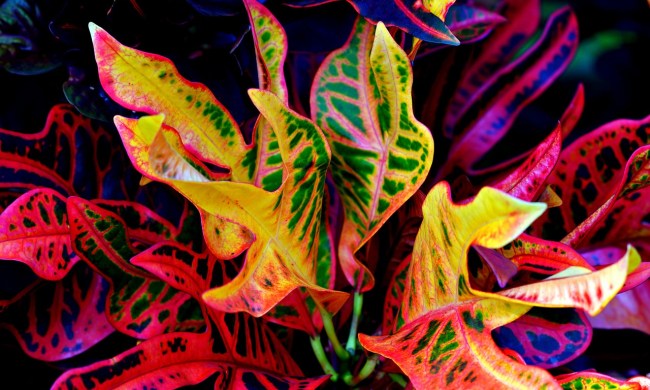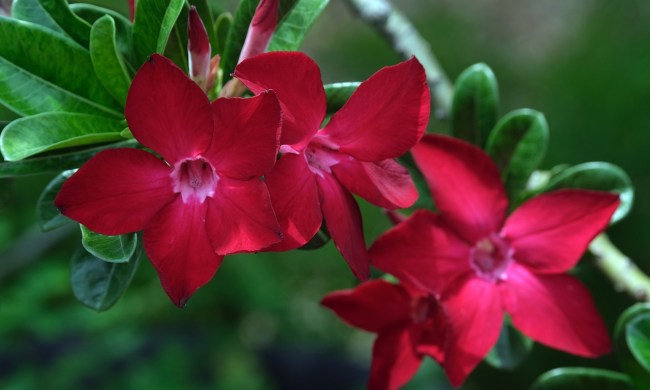There are many places in the U.S. where tropical plants can’t thrive outside, but luckily most of them can grow indoors. One lovely tropical houseplant is dieffenbachia, also known as the dumb cane plant or leopard lily. This beautiful plant is known for its large, oval leaves that are variegated cream and dark green and white flowers that are shaped similarly to a peace lily’s flowers. If you’re planning on bringing this beauty home with you, here’s everything you need to know to keep it happy and healthy.
Planting dieffenbachia

Dieffenbachia is best grown as a houseplant in the U.S., so start with a container that has good drainage holes. Use a well-draining potting soil mix that is rich and light. While dieffenbachia appreciates moist soil, it is easy to overwater, so drainage is important. In addition to enjoying wet soil, dieffenbachia enjoys wet air. Placing your dieffenbachia in or near your bathroom is an option, as the steam from baths and showers will keep the humidity high, but you can also place a tray of water and pebbles near your plant.
Dieffenbachia prefers bright, indirect light, but it will tolerate some shade as well. This plant can also grow under fluorescent lights, making it a good choice for office or desk plants. Avoid placing it in direct sunlight, however, as this can dry it out and potentially burn its leaves.
Dieffenbachia care

Once they’ve been planted and settled into their new home, dieffenbachia plants are easy to care for. They need to be watered regularly, so keep an eye on their soil. If the soil begins to dry out, it’s time to water your dieffenbachia. If you’re using a humidity tray, you’ll need to replace the water and clean the tray once or twice per month, as well.
During spring and summer, while the dieffenbachia is growing, feed it a balanced fertilizer. Depending on the type of fertilizer you’re using and the size of your plant, you should aim to feed your dieffenbachia once every month to month and a half.
You’ll also need to keep your dieffenbachia warm. Avoid placing it near drafts or air vents, which can blow cold, dry air onto your plant. Dieffenbachia is sensitive to cold, so this is particularly important during cold weather, but is something to pay attention to during warm weather, as well.
Dieffenbachia safety concerns

If you’re going to be bringing dieffenbachia into your home, you should be aware of the potential hazards it brings with it. Dieffenbachia contains oxalate crystals, which are microscopic and incredibly sharp. They can irritate your skin, eyes, nose, mouth, and throat, so it’s important to handle them with care.
Dieffenbachia plants affect pets in the same way, so keep your dieffenbachia out of reach of any cats, dogs, or small children you have in your home. Contact a vet or medical professional if you suspect a pet or person has eaten dieffenbachia, as the irritation can cause swelling in the throat. This property is actually the source of dieffenbachia’s common name, dumb cane plant, as the swelling prevents speech. However, this name is also being phased out in certain circles, since the word dumb is no longer commonly used to mean unable to speak.
Troubleshooting common problems

Small, common garden pests such as aphids and mites can sometimes bother dieffenbachia plants. These pests are more common in low-humidity environments, so keeping your dieffenbachia in a humid place and avoiding the dry air of drafts and air vents can keep them at bay. Dusting the leaves or using an insecticidal soap can help get rid of any small pests that are already on your dieffenbachia’s leaves. Don’t forget to treat the undersides of their leaves, too!
The most common problem with dieffenbachia is yellowing leaves. This is typically a sign of overwatering, which means it is easy to avoid. If your dieffenbachia’s soil is still damp, don’t water it. Be sure the potting soil is drains well, and check the container’s drainage holes to ensure they aren’t clogged. If left alone, the yellow leaves may eventually fall off on their own, but some gardeners prefer to remove them.
Dieffenbachia is a beautiful and interesting plant. Whether you’re looking for a new tropical plant for your home or a shade-tolerant plant for your office, dieffenbachia is a good choice. As long as it has enough water, you should be able to enjoy this wonderful plant and its gorgeous foliage for years. Just be sure to handle it carefully and keep it out of reach of pets and children!




